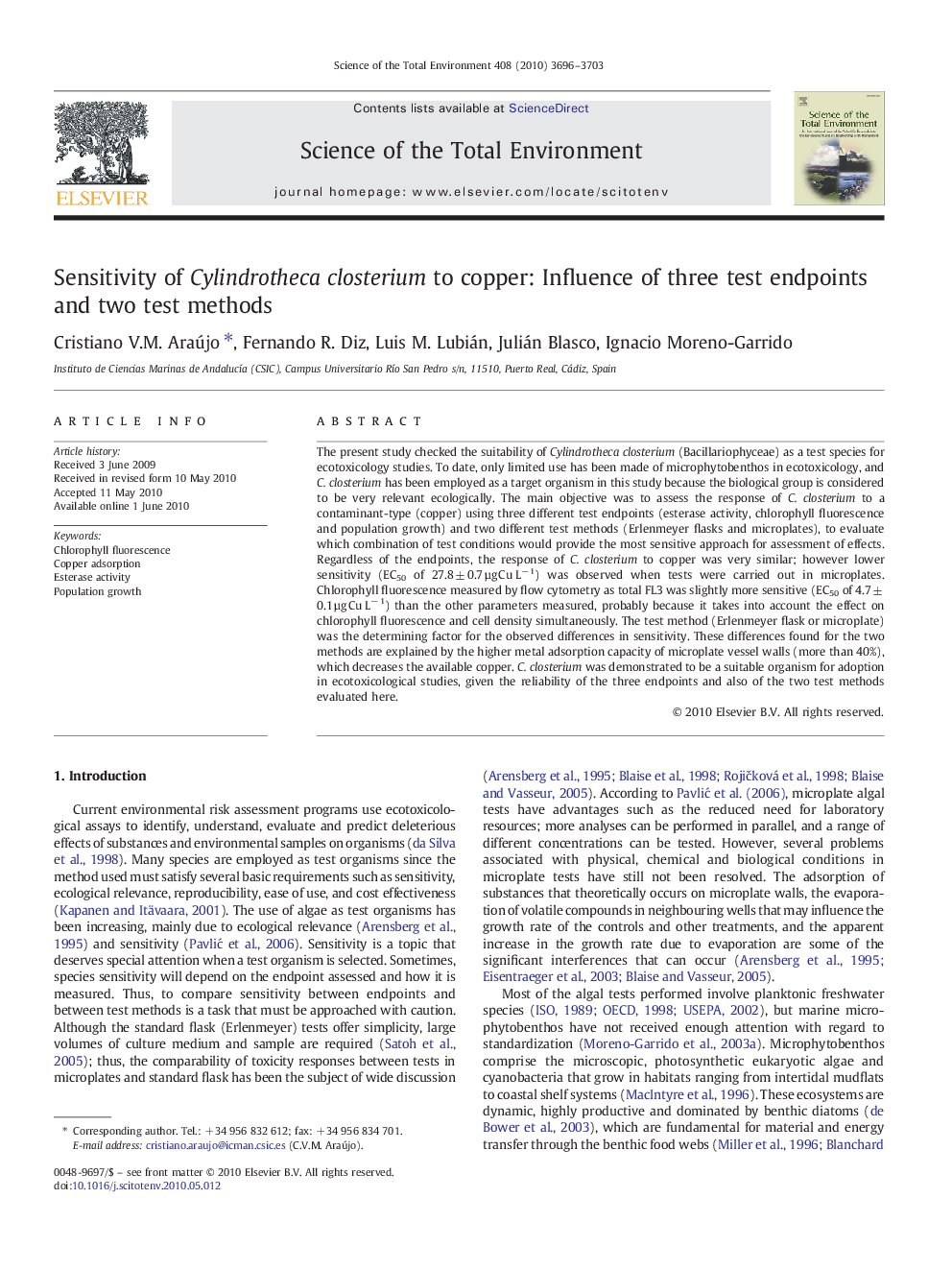| Article ID | Journal | Published Year | Pages | File Type |
|---|---|---|---|---|
| 4431236 | Science of The Total Environment | 2010 | 8 Pages |
The present study checked the suitability of Cylindrotheca closterium (Bacillariophyceae) as a test species for ecotoxicology studies. To date, only limited use has been made of microphytobenthos in ecotoxicology, and C. closterium has been employed as a target organism in this study because the biological group is considered to be very relevant ecologically. The main objective was to assess the response of C. closterium to a contaminant-type (copper) using three different test endpoints (esterase activity, chlorophyll fluorescence and population growth) and two different test methods (Erlenmeyer flasks and microplates), to evaluate which combination of test conditions would provide the most sensitive approach for assessment of effects. Regardless of the endpoints, the response of C. closterium to copper was very similar; however lower sensitivity (EC50 of 27.8 ± 0.7 µg Cu L− 1) was observed when tests were carried out in microplates. Chlorophyll fluorescence measured by flow cytometry as total FL3 was slightly more sensitive (EC50 of 4.7 ± 0.1 µg Cu L− 1) than the other parameters measured, probably because it takes into account the effect on chlorophyll fluorescence and cell density simultaneously. The test method (Erlenmeyer flask or microplate) was the determining factor for the observed differences in sensitivity. These differences found for the two methods are explained by the higher metal adsorption capacity of microplate vessel walls (more than 40%), which decreases the available copper. C. closterium was demonstrated to be a suitable organism for adoption in ecotoxicological studies, given the reliability of the three endpoints and also of the two test methods evaluated here.
